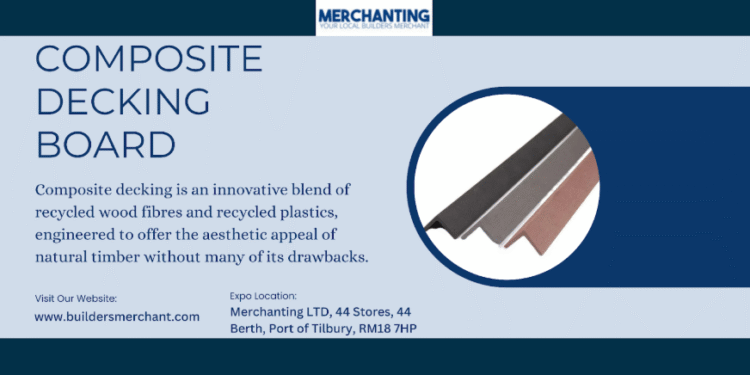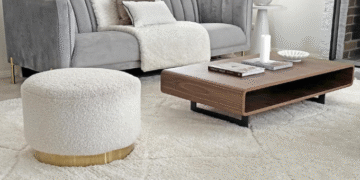In the vibrant world of UK home improvement, success hinges on selecting the right materials for the job. From transforming your garden into an outdoor oasis to ensuring the structural integrity and aesthetic finish of your indoor spaces, understanding the distinct properties of various timber and engineered wood products is paramount. This guest post will guide you through the ideal applications for composite decking board, hardwood plywood, and OSB board, helping you make informed decisions for your next renovation or build.
The Outdoor Revolution: The Enduring Appeal of Composite Decking Board
When it comes to creating a durable, beautiful, and low-maintenance outdoor living space, the composite decking board has truly revolutionised UK gardens and patios. Gone are the days when traditional timber decking was your only option for creating a raised seating area or pathway.
Composite decking is an innovative blend of recycled wood fibres and recycled plastics, engineered to offer the aesthetic appeal of natural timber without many of its drawbacks. For UK homeowners, this means:
- Exceptional Durability: Composite boards are highly resistant to rot, decay, insect infestations, and fungal growth – common issues with timber in our damp climate. They won’t warp, crack, or splinter, ensuring a safe and long-lasting surface.
- Minimal Maintenance: Forget annual sanding, staining, or painting. A simple wash with soapy water is generally all that’s required to keep your composite deck looking pristine. This saves you significant time, effort, and money over the years.
- Consistent Aesthetics: Available in a vast array of colours, finishes, and realistic wood grain patterns, composite decking offers a consistent look across your entire deck, resisting fading from UV exposure.
- Safety Features: Many composite decking ranges feature enhanced slip resistance, a crucial benefit during our often wet UK weather, and are inherently splinter-free.
While the initial outlay for a composite decking board might be higher than some softwood alternatives, its longevity and significantly reduced maintenance costs often make it a more cost-effective choice over the entire lifespan of the deck, offering true value for money in a UK garden.
The Indoor Workhorse: Strength and Finesse with Hardwood Plywood
Moving indoors, hardwood plywood stands as a testament to engineered timber’s versatility and strength. Unlike OSB, which uses larger strands, hardwood plywood is constructed from multiple thin layers (plies) of hardwood veneer, bonded together with strong adhesives. The grain of each successive layer is typically oriented perpendicular to the one below it, creating a panel with exceptional dimensional stability and impressive strength-to-weight ratio.
For UK interior projects, hardwood plywood is a go-to material for:
- High-Quality Cabinetry and Furniture: Its smooth, dense surface and resistance to warping make it ideal for crafting durable kitchen cabinets, bespoke wardrobes, bookshelves, and other pieces of furniture.
- Strong Flooring Underlayment: When a perfectly smooth and stable subfloor is required before laying down finished flooring like vinyl, linoleum, or engineered wood, hardwood plywood provides an excellent base.
- Decorative Panels: With attractive veneer faces (e.g., Birch, Oak, Maple), hardwood plywood can be left exposed and simply sealed or lacquered for a contemporary, minimalist aesthetic in wall panelling or shelving.
- Internal Doors and Joinery: Its stability makes it suitable for door blanks or intricate joinery applications where consistent performance is critical.
When sourcing, look for certified hardwood plywood to ensure it meets UK standards and is sustainably sourced.
The Versatile Substrate: OSB Board for Robust Foundations
Finally, we turn to OSB board (Oriented Strand Board), a truly versatile and cost-effective engineered wood panel that forms the backbone of many UK construction projects. Made from precision-engineered strands of wood arranged in specific orientations and bonded with waterproof resins under heat and pressure, OSB offers excellent structural properties.
In UK building and renovation, OSB is widely utilised for:
- Structural Sheathing: It’s a common choice for bracing timber frames in walls and roofs, providing excellent rigidity and a robust surface for external cladding or roofing materials.
- Reliable Subflooring: Particularly OSB/3 (suitable for humid conditions), it’s a popular choice for flooring decks over joists, offering a stable and economical base for various floor finishes. Its tongue-and-groove options make for quick, secure installation.
- General Boarding and Hoarding: Its strength and affordability make it ideal for temporary site hoarding, creating internal partitions, or for general boarding up of openings during construction.
- Shed and Outbuilding Construction: OSB provides a strong and durable skin for garden sheds, workshops, and other outdoor structures.
While OSB might not possess the aesthetic finesse of hardwood plywood, its structural integrity and cost-effectiveness make it an indispensable material for a vast array of projects where a robust and reliable substrate is required.
Smart Choices for Every Project
Ultimately, whether you’re creating a stunning outdoor living space with composite decking board, building intricate cabinetry with hardwood plywood, or laying a solid foundation with OSB board, understanding the unique characteristics of each material is key. By selecting the right board for the right job, you ensure durability, functionality, and the desired aesthetic, helping you achieve a professional and long-lasting finish for every corner of your UK property.










